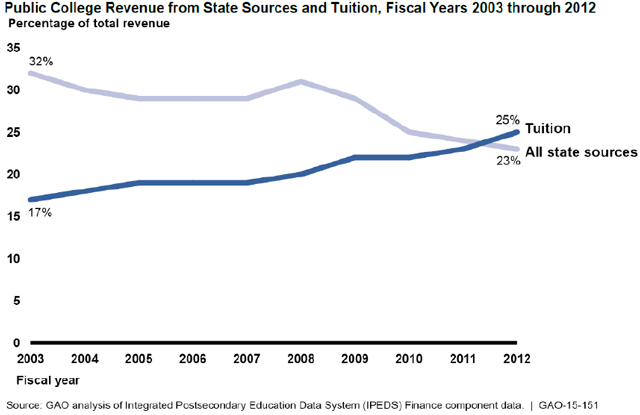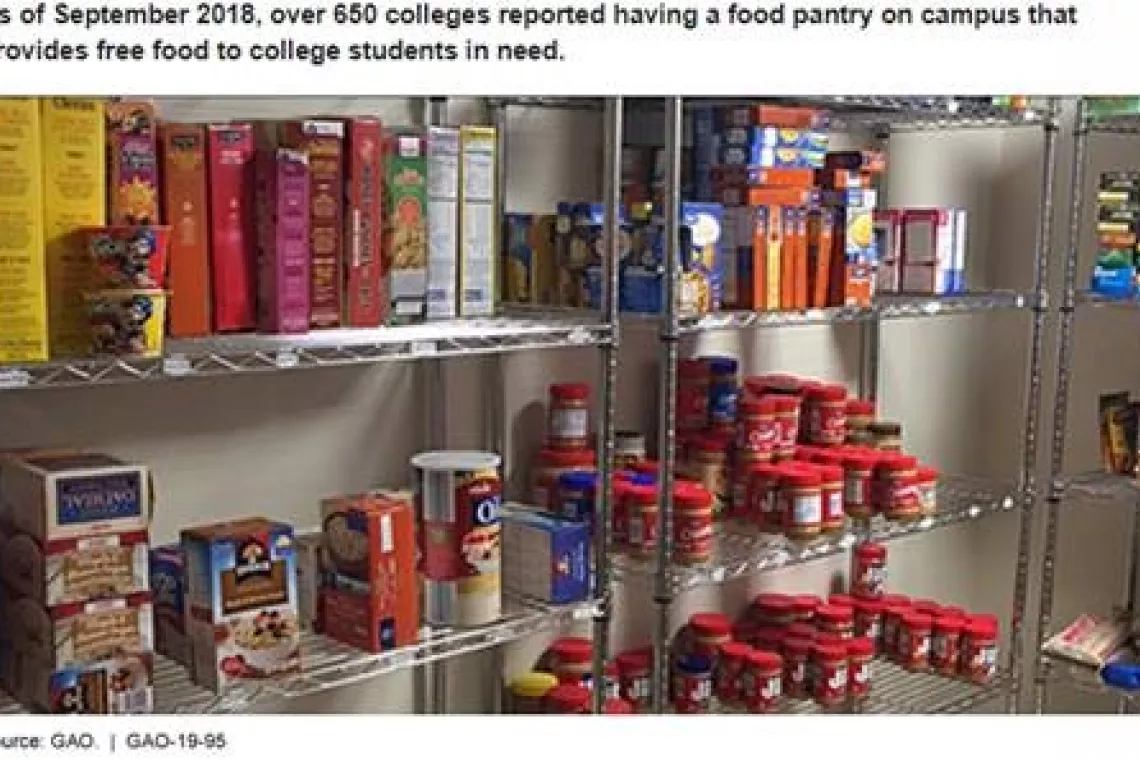Know before You Go: Weighing the Costs of College
Ah, springtime—when high school seniors’ thoughts turn to checking their real and virtual mailboxes for news from colleges and universities. But the college selection journey doesn’t end with an offer of admission. Prospective students and their families must also consider the costs of higher education. Today’s WatchBlog explores the issues, and offers some ways to avoid college cost pitfalls.
Students and Families Shoulder More Tuition Costs
Students and their families, states, and the federal government all play important roles in financing higher education. We recently found that state funding for higher education has decreased, so public colleges increasingly rely on tuition from students and their parents for funding, as shown below.
(Excerpted from GAO-15-151)
Moreover, published tuition and fees for public colleges increased by more than 50% in the past decade, and families are spending a larger portion of their budgets to pay for college. Our podcast talks about what the federal government is doing to help temper the growth of tuition costs:
Thinking beyond Tuition
Although they’re a big one, tuition and fees are not the only factor affecting college affordability. For students heading off to college, and their families, we’ve identified some other financial issues to consider as you calculate the potential costs of that college diploma:
- College textbooks: shopping around can help you save money;
- College debit cards: weigh your options—fees may be higher than you think;
- Tax benefits: learn how you can take advantage of them to help pay college costs; and
- Veterans’ education benefits: if you’re a veteran, check out what the Department of Veterans Affairs is offering.
- Questions on the content of this post? Contact Melissa Emrey-Arras at emreyarrasm@gao.gov.
- Comments on GAO’s WatchBlog? Contact blog@gao.gov.
GAO Contacts
Related Products

GAO's mission is to provide Congress with fact-based, nonpartisan information that can help improve federal government performance and ensure accountability for the benefit of the American people. GAO launched its WatchBlog in January, 2014, as part of its continuing effort to reach its audiences—Congress and the American people—where they are currently looking for information.
The blog format allows GAO to provide a little more context about its work than it can offer on its other social media platforms. Posts will tie GAO work to current events and the news; show how GAO’s work is affecting agencies or legislation; highlight reports, testimonies, and issue areas where GAO does work; and provide information about GAO itself, among other things.
Please send any feedback on GAO's WatchBlog to blog@gao.gov.





